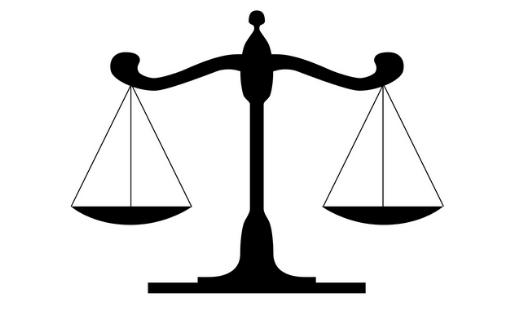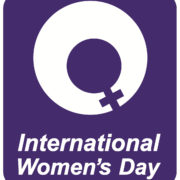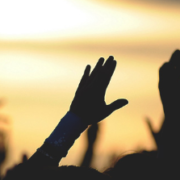Social justice is, at the moment, an imagined future where wealth and opportunities are justly distributed. It is a world free of oppression and barriers due to gender, race, class, sexuality, religion, nationality, or all other identity markers.
Social justice recognises the equal worth of all individuals and the right to have basic needs met. It is a move toward better, more inclusive systems that leads to gender equality, poverty eradication, fair employment, environmental health, access to education and numerous other improved conditions.
Social justice as a field, study and practice is sometimes divided into three parts: legal justice, commutative justice and distributive justice. This comes from the idea that we owe society, we owe each other and society owes us. A great deal of focus tends to be on the latter because we need to have systems and institutions structured in ways that protect, affirm and promote our human rights and give us equal opportunity to participate in political and social life. Social justice cannot be achieved without challenging political and societal norms, deconstructing privilege, and having uncomfortable conversations about history and its widespread effects. Maybe even more importantly, it won’t be realised until we learn to engage people who are not in our communities, schools of thought or organisations.
More awareness, more connection
Social justice movements are increasing in number, inclusion, reach and impact. This is not necessarily because we are facing more issues now than we did ten, 20, or 50 years ago. For various reasons, including the advancement of technology and its impact on ease and speed of communication, we have become more aware of national, regional and global concerns. Some would say we are hyperaware and, for some of us, sensitivity is heightened. We know we have to respond.
While seemingly working on disparate issues, social justice movements are growing more interconnected and interdependent. The 2015 adoption of the Sustainable Development Goals (SDGs) at the United Nations General Assembly has played in role in bridging the gap between communities.
The SDGs cover a range of social and economic issues including education, health and wellness, gender equality, climate action and economic empowerment. Each goal has specific targets. When all 169 targets are reviewed, interdependence of the goals and relevant issues is confirmed. For example, gender equality is dependent on target 4.5 to “eliminate gender disparities in education and ensure equal access to all levels of education and vocational training for the vulnerable”. None of the goals — a distillation of global issues — can be met without working to meet other goals. Collaboration is key.
How we do the work
There are many different approaches to social justice work. For some, direct action is the way to go. Some use it for everything at all times while others see it as necessary in specific circumstances.
One of the best known forms of activism is protest. People flood the streets with placards, demanding action from bureaucratic bodies. Sometimes they are silent, and sometimes they are not. Sometimes they are peaceful, and sometimes they are not. They are never both the beginning and end of a successful movement. The protest seemed to have died in The Bahamas until recent years. Even being revived, they only seem to draw a few dozen people for any number of reasons. The issues seem too niche, people are generally unbothered, or the action is too inconvenient. Most Bahamians seem to be interested only if the issue personally affects them, and if they can join the protest without consequence. Our protests do very little to disrupt systems and institutions. We protest politely. We give notice, get permission and pack it in after a few hours. No one is unduly bothered, but protests usually make the news.
The petition is another popular action. It is easy on time, effort, and commitment. We can easily create and share petitions, collect signatures, and notify appropriate offices of our demands and the number of people in agreement with us. A petition, however, doesn’t do much to inconvenience the people we need to take action. They can block our emails and ignore the digital masses. They know it’s much more challenging to get the same people who signed to show up and take another action.
Two of the most popular, widely-used forms of direct action are fairly easy and ineffective. This is not to discount the usefulness of these methods, but to highlight the need to take more than one action, and more than one type of action. More than raging against the machine, social justice work requires that we raise awareness, build community, centre the people most affected, open dialogue with relevant bodies, learn, understand and use the law and international commitments to frame and support demands. No one action can get the job done and it’s time to be more creative about what we do, how we do it, and who we invite to join us.
Solidarity
A frequently overlooked component of effective social justice work is solidarity-building. Few communities are large enough to affect change for themselves on their own. Support from unaffected people is critical to building mass, spreading the workload, and resourcing movements. In most cases, for the plight of a group of people to be seen, people outside of that group have to be seen to care. When students were being sent home for having natural hair, non-students and people with chemically processed hair had to stand with them. Numbers are important, and so is empathy in action.
Publicity depends on people, and word of mouth and media are both powerful. International attention to national issues is known to impact the way they are addressed. In banding together, however, we need to be careful. It’s important to be mindful others’ intentions and the ways we all influence outcomes, especially when we are on the outside.
For example, when monitoring events in other countries — especially if the cause is close to us — it can be tempting to jump into action. Even with the best intentions, this can be a careless, dangerous response. There is usually someone on the ground, already working and strategising, and outside voices or initiatives can steal their thunder, confuse community members, and potentially sabotage the developing action plan. It is not only courteous, but responsible and professional to do research and reach out to people who are already doing the work. If you don’t see anyone doing it, you’re probably not very good at research. Get some help.
The role of civil society
Civil society is critical to a fully functioning democracy. We have to constantly remind ourselves that we are more powerful than the people we elect. We need to collaborate, and create opportunities for knowledge-building and skill-sharing. Social media has made it easier for us to raise our voices, but also to preach to the choir, and facilitate laziness. We need to reach people who disagree, and people who are undecided. We need more conversations than sermons. We need to find new, accessible ways to engage. If we fail to engage and onboard new people — those who do not look or think like we do — we won’t get to that world we imagine. Empathy and creativity need to be in the social justice toolkit. They are critical to building a community prepared to help drive us into a better future.
Published by The Tribune on February 21, 2018.












Leave a Reply
Want to join the discussion?Feel free to contribute!